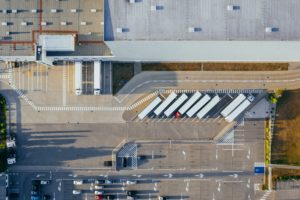One approach to reducing emissions throughout the supply chain is to require suppliers to measure their carbon emissions and to put in place a carbon reduction plan. Organisations can also, for example, choose to focus on a specific topic, such as requesting suppliers to switch to renewable energy.
A large share of the environmental and carbon footprint of any organisation often lies not within its operations, but within the goods and services it purchases. Tackling carbon emissions at supplier level has the potential to rapidly lead to emission reductions at scale. It is also important to send a clear signal to suppliers: decarbonising their operations and products is a strategic issue. The more organisations send this signal, the stronger the accelerator effect.
Key actions
-
#1 Include sustainability clauses in contracts
Include general sustainability criteria in contracts.
-
#2 Prioritise suppliers
Define key suppliers depending on spend and their relative impact on the carbon footprint. Consider further segmenting suppliers and adapting expectations accordingly (e.g. SMEs vs multinationals, suppliers in industrialised vs in emerging markets or developing economies, etc.).
-
#3 Define requirements for suppliers
Define requirements (for different segments of) suppliers, such as measuring their carbon footprint, having in place a carbon reduction plan, using renewable energy.
-
#4 Monitor compliance
Put in place a timeline for compliance, a system to monitor compliance and define actions for non-compliant suppliers.
-
#5 Include sustainability criteria in evaluation & award of contracts
Include sustainability criteria for the evaluation & award of contracts (see dedicated factsheet).
-
#6 Support suppliers
Consider providing access to information about footprint measurement and carbon reduction strategies to suppliers, especially small and medium enterprises (SMEs) and suppliers located in emerging markets (see factsheet communication & outreach).
-
Potential co-benefits
- Achieving emission reductions at scale
- Establishing strong partnerships with suppliers around a common goal
-
Success conditions
- Decarbonisation of the supply chain is a strategic priority for procurement
- Training and awareness-raising of all involved functions
-
Prerequisites & specificities
- Aggregated data on the carbon impact for bought goods and services per supplier to allow for prioritisation, based on the carbon footprint
-
Potential risks
- Excluding suppliers in emerging and developing markets
- Excluding small and medium enterprises (SMEs)

Success stories
-
Example contractual clauses
The Chancery Lane Project (TCLP) is a collaborative initiative of international legal professionals. Their website contains practical contractual clauses ready to incorporate into commercial agreements to deliver climate solutions:
- Net Zero Standard for Suppliers: These supply chain clauses can be annexed to any supply agreement, across all sectors and industries. Read more
- Renewable Energy Requirements in Supply Contracts: A clause for a supply agreement requiring the supplier/contractor to procure energy from renewable sources. Read more
Tools and best practices
-
World Business Council for Sustainable Development (WBCSD), How to decarbonize your supply chain using procurement criteria, 2022
A short guidance document on how to leverage procurement criteria and embed carbon as a decision criterion for supplier selection
Read here -
Exponential Roadmap, 1.5°C Supplier Engagement Guide
An online tool that provides practical guidance for 1.5°C-aligned targets and actions throughout global supply chain. The section on procurement contains guidance for setting supplier requirements as well as good practice examples.
Read here
To go further
-
Carbon Disclosure Project (CDP), Engaging the Chain: Driving Speed and Scale. CDP Global Supply Chain Report 2021, 2022
The report provides data on the current state of affairs when it comes to environmental action of suppliers. It is based on the submission of data from over 11,000 companies
Read here -
Transform to Net Zero, Buyer-Supplier Engagement to Reduce Upstream Scope 3 Emissions, 2021
In this Guide, three Transform to Net Zero founding members, Unilever, Nike, and Microsoft, share their approach of engaging suppliers to bring them along on the decarbonisation journey
Read here
To go further
Procurement

Supplier engagement

Sources
(1) McKinsey, Buying into a more sustainable value chain, 2021. Read here
(2) Carbon Disclosure Project (CDP), Engaging the chain: driving speed and scale, 2022. Read here
(3) Oxfam, Oxfam GB Ethical & Environmental Policy, 2020. Read here
(4) NHS England, Suppliers. Read here
(5) Transform to Net Zero, Buyer-Supplier Engagement to Reduce Upstream Scope 3 Emissions, 2021. Read here.
Cover photo © Markus Spiske/Unsplash.
